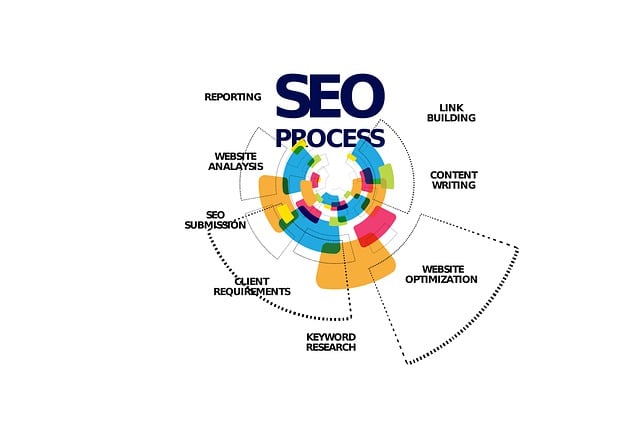On-page SEO checklist items
Title Tag Optimization
Title tag optimization is a crucial aspect of on-page SEO that directly impacts the visibility and ranking of a webpage in search engine results pages (SERPs). The title tag serves as the clickable headline for a webpage in search results, making it a significant element for both search engines and users. Crafting compelling and relevant title tags that accurately reflect the content of the page can improve click-through rates and enhance the overall SEO performance of a website.
When optimizing title tags, it is essential to include relevant keywords that accurately represent the content of the page. Keywords should be strategically placed near the beginning of the title tag to ensure search engines can easily identify the topic of the page. Additionally, keeping title tags concise and within the recommended character limit can help prevent truncation in search results, ensuring that the full title is displayed to users. Remember, well-optimized title tags not only improve search engine visibility but also entice users to click on the link, making them a critical component of a successful SEO strategy.
Meta Description Optimization
Meta description optimization is a crucial element of on-page SEO that should not be overlooked. The meta description is a brief snippet of text that appears below the title tag in search engine results. It serves as a summary of the webpage content, enticing users to click through to the website. When optimizing meta descriptions, it is important to keep them concise, relevant, and engaging. Avoid keyword stuffing and instead focus on creating a compelling description that accurately reflects the content of the page.
Crafting a well-written meta description can improve click-through rates and ultimately drive more organic traffic to your website. Make sure to include relevant keywords naturally within the meta description to improve visibility in search engine results. Additionally, be sure to tailor each meta description to the specific content of the webpage to enhance relevancy and user experience. By optimizing meta descriptions effectively, you can attract more qualified traffic to your website and improve the overall performance of your SEO efforts.
Header Tag Optimization
Header tags are a crucial aspect of on-page SEO optimization. They serve to organize and structure the content of a webpage, making it easier for search engines to understand the hierarchy and relevance of the information presented. By properly utilizing header tags, website owners can improve the readability and SEO performance of their pages.
When optimizing header tags, it is essential to strategically place relevant keywords within them. This helps search engines recognize the primary topics of the content and can improve the page’s visibility for those specific search queries. Additionally, utilizing header tags in a hierarchical order (H1 to H6) can further enhance the organization of content and signal its importance to search engines, ultimately contributing to a better overall user experience and search engine ranking.
Keyword Placement
Proper keyword placement is essential for optimizing your website’s visibility and search engine ranking. Placing keywords strategically throughout your content helps search engines better understand the relevance of your webpage to specific search queries. By naturally incorporating relevant keywords into your text, you can improve the chances of your website appearing higher in search results.
Strategically placing keywords in key areas such as your webpage’s title tag, meta description, headers, and body content can signal search engines about the main focus of your content. Avoid overloading your content with keywords, as this can be perceived as spammy and harm your ranking. Instead, focus on using keywords in a natural and contextual manner to enhance the overall quality and relevance of your content.
URL Structure
When it comes to optimizing your website for search engines, having a well-structured URL is essential. A clear and concise URL not only helps search engines understand the content of your page but also makes it easier for users to navigate your site. Consider including relevant keywords in your URL to improve its visibility and relevance to the content on your page. A well-crafted URL structure can also contribute to a better user experience by providing a preview of the page’s content before users even click on the link.
In addition to incorporating keywords, it’s important to keep your URLs simple and readable. Avoid using long strings of numbers or special characters that can confuse both search engines and users. Instead, opt for descriptive and organized URLs that clearly indicate the topic or content of the page. A clean URL structure not only enhances the user experience but also signals to search engines that your site is well-organized and trustworthy, potentially boosting your search rankings.
Internal Linking
Internal linking is a vital aspect of search engine optimization (SEO) as it aids in enhancing the user experience and enabling search engine crawlers to navigate a website efficiently. By incorporating internal links strategically within your content, you can establish relationships between different pages on your website, helping visitors to find relevant information quickly and easily. This not only improves the overall user experience but also spreads link equity throughout your site, boosting the ranking potential of important pages.
When implementing internal linking, it is essential to ensure that the anchor text used is descriptive and relevant to the destination page. This assists search engines in understanding the context and relevance of the linked content, contributing to improved organic search visibility. Furthermore, organizing your internal links in a logical and hierarchical manner can help search engines comprehend the structure of your website, ultimately leading to higher crawlability and indexability, and consequently, better rankings in search engine results pages.
External Linking
External linking plays a crucial role in optimizing a website’s credibility and authority. When done strategically, external links can add value to the content by providing readers with additional resources or references. By linking out to reputable websites, you not only enhance the user experience but also signal to search engines that your content is well-researched and supported by reliable sources. However, it is essential to ensure that the external links are relevant to the topic and context of your content, as irrelevant or spammy links may have a negative impact on your site’s credibility and SEO performance.
Moreover, incorporating external links from high-quality websites can also improve your own website’s reputation and visibility within the digital ecosystem. Search engines consider external links as a vote of confidence from other websites, indicating that your content is valuable and trustworthy. By building a network of relevant and authoritative external links, you can enhance your website’s overall SEO performance and increase the chances of ranking higher in search engine results. Remember to regularly audit and update external links to maintain the integrity and relevance of your content.
Image Optimization
Image optimization plays a crucial role in enhancing the overall user experience on a website. By ensuring that images are compressed without compromising quality, web pages can load faster, leading to higher user engagement and satisfaction. Additionally, using descriptive file names and alt text for images not only improves accessibility for visually impaired users but also helps search engines understand the content of the image, potentially boosting organic traffic.
When optimizing images for a website, it is essential to consider the importance of image dimensions. Resizing images to match the exact dimensions needed on a web page helps in reducing unnecessary load times and bandwidth usage. Furthermore, utilizing the correct file format, such as JPEG or PNG, based on the type of image content can further optimize image performance and contribute to a seamless browsing experience for visitors.
Mobile Responsiveness
In today’s digital age, ensuring that websites are optimized for mobile devices is imperative. With the rise of mobile browsing, it is crucial for websites to be responsive and adapt seamlessly to various screen sizes. Failure to prioritize mobile responsiveness can lead to a poor user experience, high bounce rates, and ultimately a loss in potential customers. To stay competitive in the online realm, website owners must prioritize mobile responsiveness in their design and development process.
A mobile-responsive website not only enhances user experience but also plays a significant role in SEO performance. Search engines like Google prioritize mobile-friendly websites in their search results, making mobile responsiveness a crucial factor in improving visibility and driving organic traffic. By investing in mobile responsiveness, website owners can cater to the growing number of mobile users and create a positive online presence that aligns with modern digital trends.
Page Loading Speed
Optimizing page loading speed is crucial in ensuring a seamless user experience on a website. Slow loading times can lead to increased bounce rates as impatient visitors are likely to navigate away if a page takes too long to load. Research shows that the majority of users expect a website to load within 2 seconds or less, highlighting the importance of optimizing loading speed to meet these expectations.
Factors such as large image files, excessive plugins, and complex code can significantly impact page loading speed. By implementing strategies such as image optimization, minifying CSS and JavaScript files, and leveraging browser caching, website owners can improve loading times and create a more efficient browsing experience for users. Prioritizing page loading speed not only enhances user satisfaction but also contributes to better search engine rankings, as search engines like Google consider loading speed as a ranking factor in their algorithms.
Content Quality
Ensuring high-quality content is vital for the success of any website or online platform. Quality content not only engages readers but also boosts your website’s credibility and authority in the eyes of search engines. When crafting content, focus on providing value to your audience by offering informative, well-researched, and error-free material.
In addition to being relevant and valuable, your content should be unique and original. Plagiarism can significantly harm your website’s reputation and ranking, so always strive to produce fresh and authentic content. By consistently delivering high-quality content, you can attract more visitors to your site, encourage repeat visits, and ultimately improve your search engine performance.
Keyword Density
One crucial aspect of Search Engine Optimization (SEO) that website owners need to pay attention to is the keyword density within their content. Keyword density refers to the frequency at which a specific keyword or key phrase appears on a webpage in relation to the total word count. It is essential for webmasters to strike a balance in keyword density – using the targeted keywords enough to signal to search engines what the content is about, but not excessively to avoid being penalized for keyword stuffing.
Maintaining an optimal keyword density can help improve a webpage’s visibility in search engine results. By strategically placing relevant keywords throughout the content, website owners can signal to search engines the relevance and importance of their webpage for specific search queries. However, it is important to avoid overusing keywords, as this can have a negative impact on user experience and can be flagged as spammy by search engines. Achieving the right keyword density requires a well-thought-out content strategy that focuses on providing valuable information to users while incorporating relevant keywords naturally.
Schema Markup
Schema Markup plays a crucial role in enhancing the visibility of a webpage on search engine result pages. By providing search engines with structured data about the content on a website, Schema Markup helps in presenting more informative and visually appealing search results to users. This can lead to higher click-through rates and improved organic search rankings.
Implementing Schema Markup not only benefits search engines in understanding the content better but also helps in providing users with more relevant and accurate information. By using Schema Markup to mark up elements like reviews, events, products, and more, websites can stand out in search results and attract more qualified traffic. It is an essential aspect of on-page SEO that can significantly impact a website’s overall performance in search engine rankings.
Canonical Tags
Canonical tags play a crucial role in helping search engines understand which version of a webpage is the primary one to index. By specifying the canonical tag, website owners can prevent duplicate content issues and ensure that the correct URL appears in search results. This not only helps in improving the overall SEO performance of a website but also enhances user experience by directing traffic to the preferred version of the page.
Implementing canonical tags is a best practice recommended by major search engines such as Google. It provides a clear signal to search engine crawlers about the most important page to consider when ranking content. Additionally, canonical tags help consolidate link equity, preventing it from being diluted across multiple versions of the same content. This strategic use of canonical tags can positively impact a website’s visibility and authority in search engine results pages (SERPs).
Alt Text Optimization
Alt text, short for alternative text, plays a crucial role in enhancing website accessibility and search engine optimization. When crafting alt text for images, it’s essential to provide concise and descriptive text that accurately depicts the image content. By including relevant keywords in the alt text, you not only improve the user experience for visually impaired individuals using screen readers but also signal to search engines the context of the image, thus boosting your site’s visibility in search results.
Moreover, avoid using generic phrases like “image1234.jpg” or leaving the alt text field blank. Instead, strive to offer meaningful descriptions that add value to the user experience. Remember, alt text is not only a helpful tool for visually impaired users but also serves as a valuable opportunity to reinforce your website’s relevance and improve its overall SEO performance.






